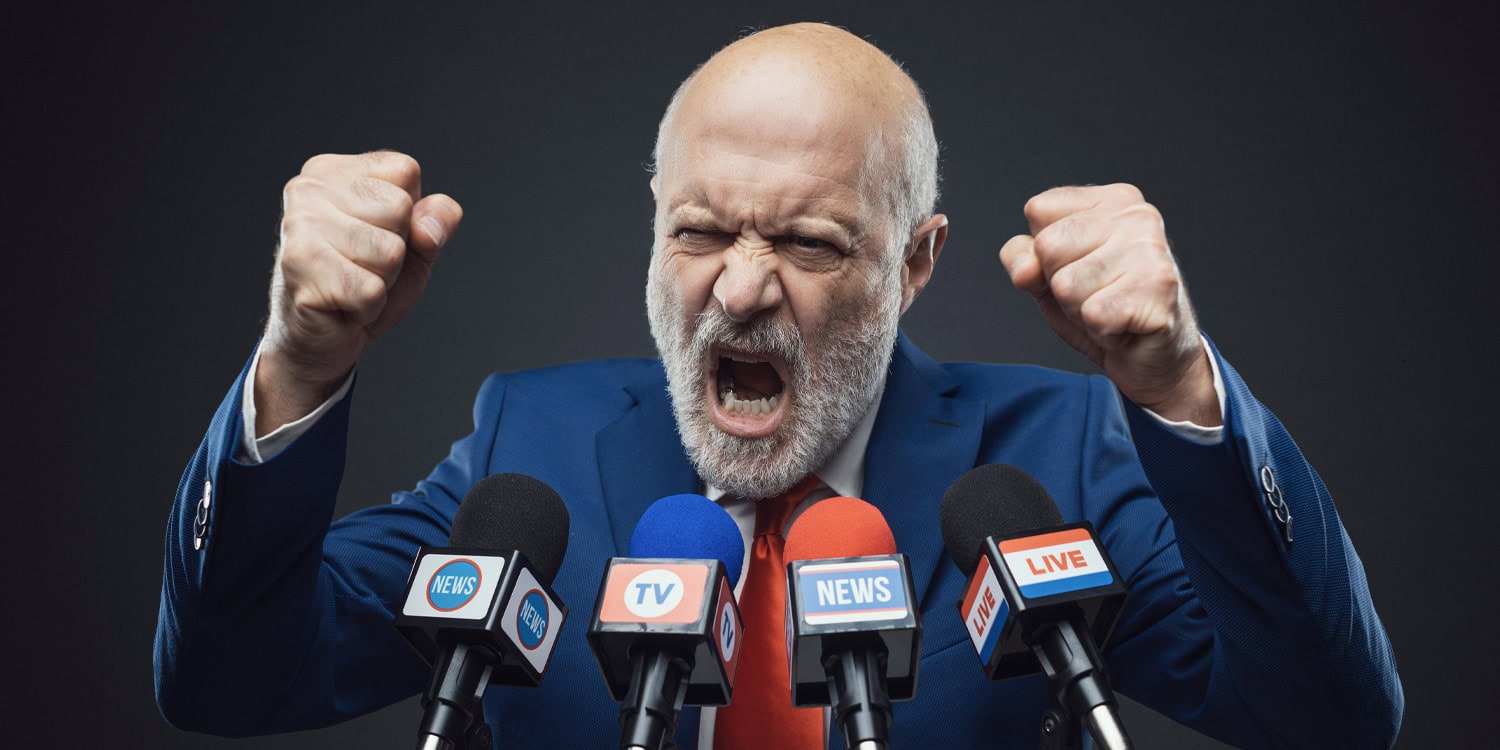Political discussions in the United States often appear to be dominated by voices from the far left and far right. A new study published in the Journal of Applied Social Psychology has found that people generally believe this emphasis on the extremes is not accidental, but rather reflects an underlying dynamic within political groups where moderate members are viewed with less favor than those with more radical stances. Through a series of experiments, researchers found that individuals anticipate both Democrats and Republicans will show less approval and trust towards fellow party members who express moderate viewpoints compared to those with extreme views.
Why would political groups seem to prefer their more extreme members? The researchers set out to explore this question by examining common understandings of group dynamics within political parties. They noted that in today’s political climate, strong divisions exist between Democrats and Republicans, with each side holding distinct and often opposing beliefs. Within this context, individuals with moderate political views can be seen as deviating from their own party’s norms in a way that aligns them somewhat with the opposing party.
This kind of deviation, the researchers suggested, might be perceived differently than when someone deviates by becoming even more strongly aligned with their own party’s core ideology. Prior research has shown that groups often react more negatively to members who stray towards an opposing group, compared to those who become even more strongly aligned with the group’s values. The researchers wanted to investigate whether people intuitively grasp this dynamic within the context of American political parties.
“Back in 2017, I started my PhD with Dr. Laurie O’Brien. Dr. Moss, Dr. O’Brien, and I discussed how the current political parties seemed to be supporting more and more extreme candidates, and we started wondering if lay people in the United States thought this as well,” said study author Danica Kulibert (@danicajk), who is now an assistant professor at Kennesaw State University.
“I have always been very involved in politics and political manners, so better understanding how people perceived political parties and the inner workings of political parties really interested me. There was a growing number of research teams looking at meta-perceptions between political groups, but none were really looking at broader perceptions of political parties. We decided to start assessing how people (regardless of their own political party) viewed both Democrats and Republicans.”
To investigate these ideas, the researchers conducted six separate experiments involving over 1,600 participants. In the first experiment, college students were asked to imagine they were looking at a website for a Democratic candidate running for state senate in Colorado. Participants were randomly assigned to read different descriptions of the candidate’s political views. In one scenario, the candidate was described as having views that were in line with the Democratic Party’s platform. In another, the candidate was presented as politically moderate, preferring a less liberal platform. In a third scenario, the candidate was described as politically extreme, wanting a platform that was more liberal. After reading these descriptions, participants were asked to rate how they thought other Democrats would view this candidate in terms of approval, loyalty to the Democratic Party, and adherence to principles.
The second experiment was very similar, but instead of a Democratic candidate, participants were presented with a website for a Republican candidate. The descriptions of the candidate’s views were adjusted to be either in line with Republican norms, moderate (leaning less conservative), or extreme (leaning more conservative). Participants then rated how they believed other Republicans would perceive this candidate on measures of approval, loyalty, and principles.
In a third experiment, the focus shifted from political candidates to ordinary party members. Participants were asked to evaluate a Democratic campaign volunteer. Similar to the previous experiments, the volunteer was described as having views that were either normative for Democrats, moderate, or extreme. Participants then assessed how they thought other Democrats would view this volunteer regarding approval, loyalty, and principles.
To ensure the findings were not limited to college students, the fourth and fifth experiments were conducted with more diverse groups of people recruited online. These experiments essentially repeated the designs of the first and second experiments, again using Democratic and Republican candidate scenarios with moderate, normative, and extreme viewpoints.
The final experiment aimed to make the descriptions of political viewpoints even more precise. Participants were given information based on actual survey data about the typical political views of Democrats and Republicans on several issues. They were then asked to evaluate a Republican individual whose views were described as either exactly in line with the average Republican, moderately less conservative, or extremely more conservative. This experiment aimed to confirm whether the patterns observed in previous experiments held true when using concrete data about party positions.
Across all six experiments, the researchers consistently found that people believed fellow party members would react less favorably to political moderates compared to political extremists.
“The average American, regardless of their own political party, believes Democrats and Republicans approve of their extreme members more than their moderate members,” Kulibert told PsyPost. “Americans also believe the political parties view their extreme members as more loyal and more principled than their moderate members.”
Specifically, in the first experiment, participants thought Democrats would be less approving of a moderate Democratic candidate, see them as less loyal to the party, and consider them less principled compared to an extreme Democratic candidate. The second experiment mirrored these findings for Republicans. Participants anticipated Republicans would also be less approving, less trusting of the loyalty, and see less principle in a moderate Republican candidate compared to one with extreme views.
Experiment three extended these results to rank-and-file party members, showing that people believe Democrats would also view a moderate Democratic volunteer less positively than an extreme Democratic volunteer. Experiments four and five, using more diverse participant samples, largely confirmed the findings from the first two experiments. Finally, experiment six, using real-world data on political opinions, reinforced the conclusion that people expect Republicans to look less favorably upon moderate Republicans than upon those with more extreme conservative views.
“It is important to highlight that the participants’ own political party did not change the direction of the effects,” Kulibert said. “For example, both Democrats and Republicans think Democrats approve of their extreme members more than their moderate members. I do think the downstream consequences may differ based on the observer’s political party, and we plan to assess that moving forward.”
Despite the strengths of the research, the study does have some limitations that the authors acknowledge. One important consideration is that the experiments were based on hypothetical scenarios and brief profiles rather than on real-world political campaigns or detailed biographies.
“I think a big thing to consider is that these are hypothetical vignettes and how these perceptions translate to real-world nominations is still unknown,” Kulibert noted. “There are a lot of things that impact who people vote for. Plus, how a party nominates county or state-level candidates is very different from federal-level candidates. We hope to better understand some of that nuance moving forward.”
“We have three really exciting projects related to this research. The first is assessing how moderate and extreme political members believe their party views them and if these perceptions can impact those members’ political behaviors. Another area of research aims to examine if the perceptions the average American has regarding moderate and extreme political members is accurate with how political parties truly view moderate and extreme members. Finally, we started some research to see how the current findings translate to other countries. We know the political climate in the US is somewhat unique, but other countries also have seen an increase in extreme political parties.”
“I am so excited to continue political psychology research and am always looking for collaborators,” Kulibert added. “I also think people should look at other scholars in this area, including Dr. Samantha Moore-Berg and Dr. Emily Kubin. There is some really interesting work in political polarization, moral outrage, and decreasing political animosity. I also think organizations like More in Common are doing some great work.”
The study, “Perceptions of Political Deviants in the US Democrat and Republican Parties,” was authored by Danica Kulibert, Aaron J. Moss, Jacob Appleby, and Laurie T. O’Brien.




